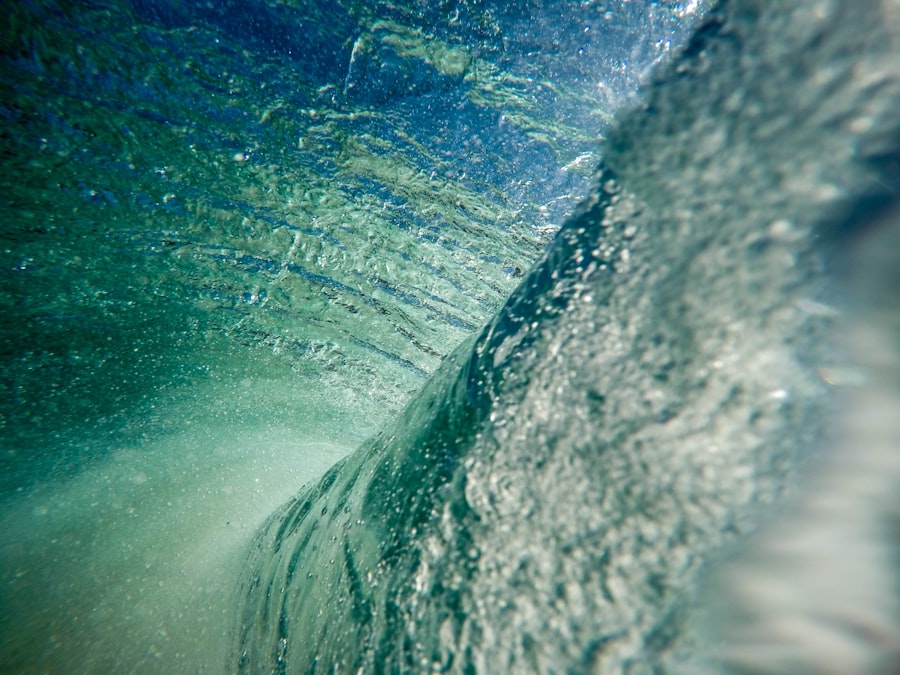When a water heater malfunctions, it can lead to a range of issues that disrupt daily life. The first step in addressing this predicament is identifying the specific problem at hand. Homeowners may notice a lack of hot water, strange noises emanating from the unit, or even leaks around the base of the heater.
Each of these symptoms can indicate different underlying issues, and recognizing them is crucial for effective troubleshooting. For instance, if the water heater is producing lukewarm water instead of hot, it may suggest a problem with the heating elements or thermostat settings. Moreover, understanding the age and type of the water heater can also provide valuable context.
Traditional tank water heaters and modern tankless systems operate differently, and their common issues vary accordingly. A homeowner might find that their older model is simply reaching the end of its lifespan, while a newer unit may be experiencing a technical glitch. By taking the time to assess these factors, individuals can better prepare themselves for the next steps in resolving their water heater woes.
Key Takeaways
- Identifying the Problem: Start by identifying the specific issue with your water heater, such as no hot water or strange noises.
- Checking the Power Source: Ensure that the water heater is receiving power and that the circuit breaker hasn’t tripped.
- Inspecting the Pilot Light: If you have a gas water heater, check to see if the pilot light is lit and if not, follow the manufacturer’s instructions to relight it.
- Testing the Thermostat: Adjust the thermostat to a higher temperature and listen for the heating elements to kick in, indicating that the thermostat is functioning properly.
- Flushing the Tank: Regularly flush the tank to remove sediment buildup and improve the efficiency of the water heater.
- Insulating the Pipes: Insulate the hot water pipes to prevent heat loss and save energy.
- Checking for Leaks: Look for any signs of water leaks around the water heater and address them promptly to prevent damage.
- Calling a Professional: If you’re unable to resolve the issue on your own, it’s important to call a professional plumber or HVAC technician for further assistance.
Checking the Power Source
Once the problem has been identified, the next logical step is to check the power source. For electric water heaters, this means ensuring that the unit is receiving adequate electricity. Homeowners should start by inspecting the circuit breaker panel to see if any breakers have tripped.
A tripped breaker can prevent the water heater from functioning properly, and resetting it may resolve the issue. If the breaker continues to trip after being reset, it could indicate a more serious electrical problem that requires further investigation. For gas-powered water heaters, checking the gas supply is essential.
Homeowners should ensure that the gas valve is open and that there are no obstructions in the gas line. Additionally, it’s wise to verify that other gas appliances in the home are functioning correctly, as this can help determine if the issue lies with the water heater specifically or with the gas supply as a whole. By thoroughly examining the power source, individuals can eliminate one of the most common causes of water heater failure.
Inspecting the Pilot Light

In gas water heaters, the pilot light plays a critical role in igniting the burner that heats the water. If there is no hot water, one of the first things to check is whether the pilot light is lit. Homeowners can usually find a small window on the front of the unit that allows them to see if the flame is burning.
If it has gone out, relighting it may be a simple solution to restore hot water. However, if the pilot light frequently goes out, it could indicate a more significant issue, such as a faulty thermocouple or a draft affecting the flame. When inspecting the pilot light, it’s also important to look for signs of soot or debris around the burner area.
Accumulated dirt can hinder proper combustion and affect overall efficiency. Cleaning this area carefully can sometimes resolve issues related to inconsistent heating or strange noises coming from the unit. By taking these steps to inspect and maintain the pilot light, homeowners can ensure their gas water heater operates smoothly and efficiently.
Testing the Thermostat
| Temperature | Time | Result |
|---|---|---|
| 70°F | 8:00 AM | Pass |
| 75°F | 9:00 AM | Pass |
| 80°F | 10:00 AM | Fail |
The thermostat is another critical component in a water heater’s operation, as it regulates the temperature of the water being heated. If hot water is not reaching desired temperatures or if it fluctuates unexpectedly, testing the thermostat should be a priority. Homeowners can begin by checking the thermostat settings to ensure they are set correctly; sometimes, accidental adjustments can lead to confusion about whether the unit is functioning properly.
If the settings appear correct but issues persist, testing the thermostat with a multimeter can provide further insight. This tool measures electrical resistance and can help determine if the thermostat is functioning as intended. If it shows signs of malfunction, replacing it may be necessary to restore proper temperature control.
By addressing thermostat issues promptly, homeowners can avoid further complications and ensure their water heater operates efficiently.
Flushing the Tank
Over time, sediment and mineral buildup can accumulate in a water heater tank, leading to reduced efficiency and potential damage. Flushing the tank is an essential maintenance task that homeowners should consider regularly to prolong the life of their unit. This process involves draining water from the tank to remove sediment and debris that may have settled at the bottom.
Not only does this improve efficiency, but it also helps prevent corrosion and other long-term issues. To flush a water heater tank, homeowners should first turn off the power supply or gas valve and allow the unit to cool down. Then, they can connect a garden hose to the drain valve at the bottom of the tank and direct it to a suitable drainage area.
Opening the valve will allow sediment-laden water to flow out until it runs clear. This simple yet effective maintenance task can significantly enhance performance and extend the lifespan of a water heater.
Insulating the Pipes

Insulating pipes connected to a water heater is another important consideration for homeowners looking to improve efficiency and reduce energy costs. Uninsulated pipes can lead to heat loss as hot water travels from the heater to faucets or appliances, resulting in wasted energy and longer wait times for hot water. By wrapping these pipes in insulation sleeves or using foam pipe insulation, homeowners can minimize heat loss and ensure that hot water reaches its destination more quickly.
In addition to improving efficiency, insulating pipes can also help prevent freezing during colder months. In regions where temperatures drop significantly, uninsulated pipes are at risk of freezing and bursting, leading to costly repairs and potential damage to property. By taking proactive measures to insulate both hot and cold water pipes, homeowners not only enhance their water heater’s performance but also protect their plumbing system from winter-related issues.
Checking for Leaks
Leaks are one of the most concerning issues that can arise with a water heater, as they can lead to significant damage if left unaddressed. Homeowners should regularly inspect their units for any signs of leakage around connections, valves, or at the base of the tank itself. A small puddle or dampness around these areas may indicate a developing problem that requires immediate attention.
If leaks are detected, it’s essential to determine their source before taking further action. Tightening loose connections or replacing faulty valves may resolve minor leaks; however, if there is significant corrosion or damage to the tank itself, replacement may be necessary. Addressing leaks promptly not only prevents further damage but also ensures that energy efficiency is maintained within the home.
Calling a Professional
While many homeowners may feel comfortable tackling basic maintenance tasks on their own, there are times when calling in a professional is essential. If troubleshooting efforts do not yield results or if there are signs of significant damage or malfunction, enlisting an expert’s help can save time and prevent further complications. Licensed plumbers or HVAC technicians possess specialized knowledge and experience that allows them to diagnose issues accurately and recommend appropriate solutions.
Additionally, professionals have access to tools and equipment that may not be readily available to homeowners. They can perform complex repairs safely and efficiently while ensuring compliance with local codes and regulations. Ultimately, when faced with persistent problems or uncertainties regarding a water heater’s condition, seeking professional assistance is often the best course of action for ensuring long-term reliability and peace of mind.
If you are experiencing a water heater malfunction, it may be time to consider upgrading your piping system to prevent further issues. Check out this article on the 6 Best Piping Engineering Courses You Can Pursue to Ace the Competition for tips on how to improve your plumbing infrastructure. Properly installed pipes can help ensure that your water heater functions efficiently and effectively.
FAQs
What are common causes of water heater malfunction?
Common causes of water heater malfunction include sediment buildup, a faulty heating element, a broken thermostat, a leak in the tank, or a malfunctioning pressure relief valve.
How can I troubleshoot a water heater malfunction?
You can troubleshoot a water heater malfunction by checking for power supply issues, inspecting the thermostat and heating elements, flushing out any sediment buildup, and checking for leaks in the tank or pipes.
When should I call a professional for water heater repair?
You should call a professional for water heater repair if you are unable to identify or fix the issue on your own, if there is a significant leak, if the water heater is making unusual noises, or if you notice a decrease in hot water supply.
What are the potential dangers of a malfunctioning water heater?
Potential dangers of a malfunctioning water heater include the risk of scalding from excessively hot water, the risk of flooding from a leak, and the potential for a gas water heater to release carbon monoxide if not functioning properly.
How can I prevent water heater malfunctions?
You can prevent water heater malfunctions by regularly flushing out sediment, checking for leaks, maintaining the proper temperature settings, and scheduling annual maintenance with a professional technician.






